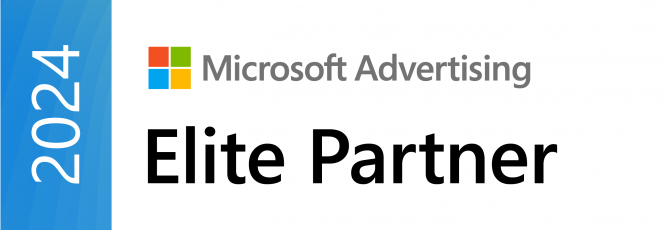
Improve your PPC activity with these Google Ads performance benchmarks
Google PPC advertising can be an incredibly effective marketing tool. But spend can quickly add up, leading you to believe otherwise.
Therefore, it’s important, to monitor your campaign performance in order to determine its effectiveness, and whether in fact, it is generating a worthwhile return on your investment.
Benchmarks provide you with a point or figure to measure your performance against, which indicates how well, or poorly, your activity is doing when compared to your competitors’.
There are many different performance indicators that you can look at. But depending on your business and its PPC goals, the usefulness of each will vary. However, some of the most common and widely accepted PPC performance indicators include cost per click, click-through rate and conversion rates.
Each industry has its own set of benchmarks when it comes to PPC as users are likely to be searching on Google for some products and services more than others. And as you know, the more advertisers bidding on a search term, the more competitive a keyword is and consequently, the higher its cost per click.
But interestingly, some high volume keywords do not have many advertisers bidding on them, so they can often be relatively affordable. In contrast, some high quality ‘buying keywords’ can have lower search volumes but be much more competitive and therefore, expensive due the sheer amount of bidders.
Therefore, a high CPC is more so an indicator of an industry’s competitiveness than an advertiser’s performance. Although, keeping CPC low is ideal as it allows budget to be maximised.
So, in order to do this, businesses should strategise the way in which they select their keywords. Rather than opting for generic industry terms such as “legal advice” for law firms or “trainers” for shoe retailers, go for keywords or phrases that are more niche, specific and relevant to your business offering.
Long tail keywords are another effective way to keep CPC low. This may include “how to” phrases or things such as “what legal advice do you need when buying a house” or “best trainers for running”, for example.
As well as being significantly cheaper in terms of average CPC, these phrases often improve PPC performance as users searching for such queries do so with greater intent to learn or purchase than those searching for more generic terms.
The quality score is another benchmark metric to take into consideration when analysing PPC performance. As the name suggests, the quality score is an assessment of the quality of your keyword choices, ads and landing pages.
The score is represented by a figure between 1 – 10, with the higher end of the scale indicating better quality.
In order to assess quality, aspects such as the expected click through rate, ad relevance and landing page experience are considered. This, therefore, highlights which areas you should focus improvement efforts on.
For example, advertisers should look to align keywords with ad copy, and then optimise user experience on landing pages.
The quality score isn’t just a vanity metric, either. Ultimately, high quality ads can lead to lower cost per clicks and improved ad positions, promoting better overall performance.
Click through rates are another way to assess how well your ads are performing. CTR is calculated by dividing the number of clicks an ad receives by the number of times it is shown. The higher the CTR, the better it’s performing.
The average CTRs across Google Ads accounts are as follows:
Although display ad CTR is significantly lower, that’s not to say advertising via the display network isn’t effective. It’s important for businesses to consider what their goals are before deciding which ads are best for them.
For instance, display advertising is much more suited for products that can be supported by visual aids, whereas the search network is for services that are better explained through copy.
The display network is also popular amongst advertisers for remarketing strategies. The visual cues prompt impulse purchases for items users have been on the fence about or act as another touchpoint in their customer journey, which will bring them one step closer to making a buying decision.
But as well as an indicator of ad performance, CTR can also be used to determine whether you’re targeting the right keywords. A low CTR might be evidence that you’re not as users searching for your target keywords are not clicking on your ads for a reason. And usually, that’s because there’s little relevance between the keyword and your ad. It could suggest that your ad copy doesn’t quite align the two well enough. To improve PPC performance and bring your business closer to the benchmark figure, a review and then amendments of your keywords and ad copy could do the trick.
A conversion metric assesses performance by measuring the rate at which people clicked through to your website from a search or display ad and then completed an intended action.
This action will vary from business to business but could include things such as completing a purchase or submitting an enquiry form, for example.
The average conversion rates across Google Ads accounts are:
Again, the figure is much lower for display ads than it is for search ads. But as with the CTR, this doesn’t necessarily mean you should avoid advertising on the display network. Although conversion might be lower, the display network is a great way to improve brand awareness and encourage recall, sometimes without the user even realising.
Regardless of whether the user clicks through to your website from a display ad, there’s a chance they have noticed it and may even go on to research your brand or product off their own accord, later.
Similarly, although the figures mentioned above are an average across all Google Ads accounts, it should be noted that conversion rates will vary between industries.
We usually find that ecommerce businesses have a higher conversion rate than professional services or manufacturing companies. The main reason for this is because click to sales for ecommerce is relatively quick and easy to both perform and track.
With B2B services however, there is often a lag of 3-9 months between inquiry and sale. A click through usually marks the beginning of the research phase of a customer journey. They may then go on to explore the services offered by competitors orare look for other resources both online and off, before getting in touch with your business.
To accurately measure conversion rates in these cases, there needs to be a wider view of the business’s touchpoints, which can be achieved with a centralised CRM system.
For example, as standard practice, you can ask those who enquire by phone how they found out about your business. If they say Google, it is likely they saw an ad. This can then be added to your CRM system and taken into account when analysing PPC performance.
Although Google Ads benchmarks are a great way to ensure your PPC activity is performing well, these figures are by no means a Holy Grail. Rather, they should be used to find areas of improvement in your activity. By taking action, you can expect to yield better results and be well on your way to growing your business online.
To find out more about how you can get the most out of your PPC advertising, get in touch with our team of experts today.







© 2024 Diginius Ltd. All rights reserved.

Chester Yang is the Microsoft Program Manager at Diginius with a background in economics and quantitative research.
At Diginius, Chester focuses on nurturing partnerships with PPC agencies and integrating marketing and sales solutions.